#Depicting: Nintendo DS
Text
Tomodachi Collection

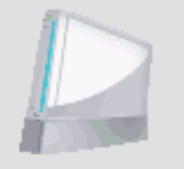

#Tomodachi Collection#Depicted by: Nintendo DS#Depicting: Nintendo DS#Depicting: Nintendo Wii#Depicting: Famicom#Depicting: Game Boy#Depicting: Virtual Boy#Depicting: Virtual Boy Controller
52 notes
·
View notes
Text
The Problem with the Gerudo | Orientalism in Legend of Zelda
EDIT: Because I made an updated and more in-depth version of this now that Tears of the Kingdom has been out longer, I've posted the updated link here in place of the original.
With the release of Tears of the Kingdom, we have to have this discussion again. The desert vai outfit was racist, not that the game removed it to address that, but the Gerudo are built entirely on orientalist tropes that go beyond just the outfit. We also talk about orientalism as shown in works like Aladdin and Ducktales.
Some Excerpts:
I'm not saying to abandon the idea of queering Link entirely, but only to understand that Legend of Zelda relies very heavily on a number of euro-fantasy tropes that rely on presenting numerous non-white people as exotic playthings and to consider the position that puts queer non-white folks in.
The entire scene of Link getting the Vai outfit and questioning the man giving it to him is built on transphobia.
This isn't queer expression, it's racial exoticism. They're not imagined as people with a society that makes sense, everything around them being so fixated on finding men and having Link and other white guys infiltrating their space.
Orientalism at its core is an imagined vision of real oppressed people by a dominant group in a way that excludes them from their own portrayal and reinforces real-world systemic oppression.
Entire fictional groups in Zelda such as the Rito, Twili, Zonai, Gorons, and Deku Scrubs to name a few incorporate racial coding in addition to the Gerudo. That recontextualizes how we look at say how the Deku are portrayed in Majora's Mask where they're jungle dwelling savages boiling this monkey alive because they think he kidnapped their princess. This is where racial coding comes into play because Nintendo is using a racial trope commonly used to depict Black and several native indigenous people as barbaric.
The Gerudo in Ocarina of Time are depicted as a race of desert-dwelling thieves. You're formally introduced gameplay wise when you have to sneak around their hideout and free these men who were seduced by what the game presents to us as dangerous but irresistible women. Despite being a group of almost entirely women, their society is patriarchal as the in-game lore states the lone man born every century is destined to be their leader. The Gerudo also go out into Hyrule to go find boyfriends.
Ocarina of Time is one of the earliest Zelda games to portray a human or human-like version of Ganon, the man of the desert he's repeatedly called, but they use racial coding with his human counterpart and make him an Arab man with some other cultures mashed in, which they also conflated with Islam to characterize him as evil and dangerous.
Ocarina of Time goes a step further as the recurring symbol of the Gerudo shown here is an altered version as seen on the mirror shield obtained in the spirit temple. The original symbol is a crescent moon and star very closely resembling the symbol of Islam. A common orientalist trope that does this is the conflation of Arabs with the religious faith of Islam. This was changed alongside prayer chanting used in music for the fire temple on some N64 cartridges and subsequent ports and the DS remake of Ocarina of Time.
The fact that Nintendo is a Japanese company doesn't magically make them immune to these issues, especially because 1) orientalism doesn't only encompass Asian people and 2) Even the term "Asian" encompasses countless subcommunities each with very distinct histories.
#legend of zelda#tloz#tears of the kingdom#orientalism#gerudo#zonai#twilight princess#ocarina of time#wind waker#tloz oot#oot#ww#totk#vai outfit#ganondorf#phantom ganon#loz ganon#calamity ganon#arabic#egypt#aladdin#disney#ducktales#ducktales 2017#dt17#link#totk link#zelda#princess zelda#totk zelda
165 notes
·
View notes
Photo

Drawing of the Nintendo of Japan headquarters, depicted with a Mario cap, from a 2009 interview with the developers of the Japan-only Ripened Tingle's Balloon Trip of Love for the Nintendo DS.
Main Blog | Twitter | Patreon | Small Findings | Source
221 notes
·
View notes
Photo
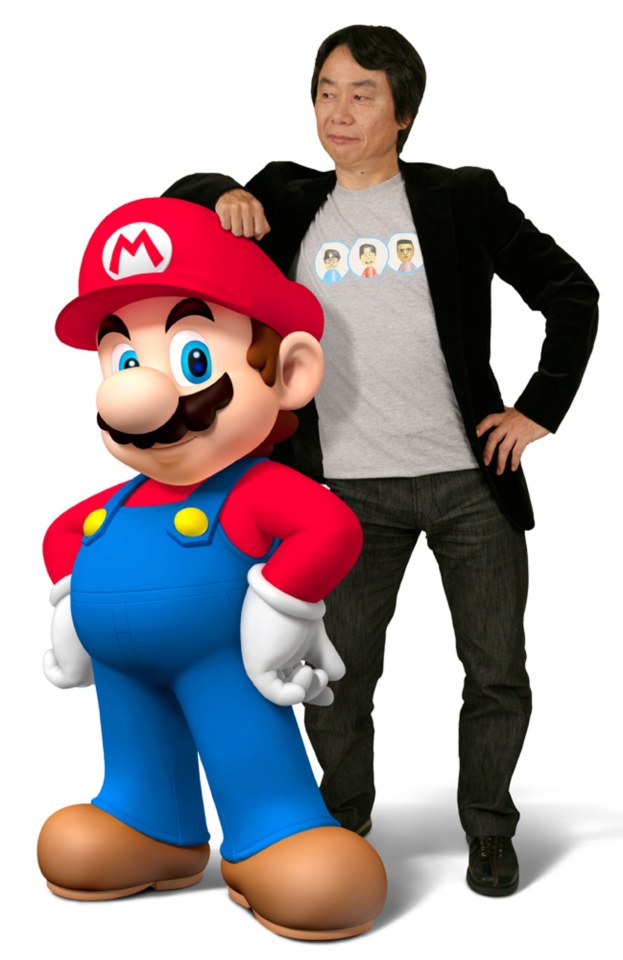
Promotional image released by Nintendo of Japan in 2008, depicting Shigeru Miyamoto leaning on artwork of Mario from Mario Party DS.
Main Blog | Twitter | Patreon | Small Findings | Source
459 notes
·
View notes
Text
Black3White3 but it starts with the player in Gear Station, having been asked by Submas to accompany them into a long-abandoned tunnel. They don't know what they'll find, but they want some backup just in case. They go down slowly on a speeder being powered by Eelektross, the tunnel lit by Chandelure as there's no electrical service in the tunnel anymore. There are signs every so often that say "DANGER: DO NOT ENTER" and "TUNNEL NOT IN SERVICE", and the atmosphere gets creepier and creepier, the music slowly building on itself, speeding up like the prologue music from Tears of the Kingdom.
Finally it all comes together in an open area, revealing
the WiFi train that's been abandoned since Nintendo shut down the DS network. Some other employees moved it there years ago to keep it out of the way.
Cue major sidequest of the player traveling around Unova to find specialized parts long out of production because Submas wants to get the WiFi train redone and up and running again, and because it's a Pokemon game of course a kid between the ages of 10 and 16 has to do all the work.
bl*nkshippers dni--I will block you, and dni if you create or otherwise support works depicting Submas as "unhinged", "feral", and/or think them being mentally unwell is entertainment. Those are my boundaries, I have a right to set and enforce them, and I will block you.
#Pokemon#Submas#ingo pokemon#emmet pokemon#how's my shitposting? call 1 800 sht post to report on my shitposting#bl*nkshippers dni i will block you#also dni if you create or otherwise support works depicting Submas as unhinged and/or think them being mentally unwell is entertainment#them's the boundaries and I have a right to create them and block people who don't respect them thanks!
15 notes
·
View notes
Text

I decided to gather a few non-obvious facts about Nanami
1. The similarity between Nanami and Chihiro is that they have kanji numbers in their names, with the numbers being 千 chi , which means "thousand".
2. Chiaki the only dead character from the 77 class.
3. Kazutaka Kodaka, before coming up with a character, denotes him with one characteristic (references). He confirmed this in his Twitter account. Nanami Chiaki's concept is an invisible girl.
4. The name "Nanami Chiaki," according to Kodaka, depicts the appearance of a serene man who blends so naturally into the background that he is almost invisible.
5. Nanami was originally planned as Fujisaki's older sister.
6. According to the creator of the series (Kazutaka Kodaka) - Nanami, who helped Hajime in the sixth chapter, was not like the girl the player sees throughout the game. This gave rise to the idea of creating an alternate version - her real-life prototype, which appears in the anime.
7. Nanami was purposely not shown in the Despair arc trailer, her appearance was supposed to be a surprise.
8. Kana Hanazawa described Nanami as a difficult character to understand at the beginning of the game. And noted that the best thing about Chiaki is her development as the story progresses.
9. Kana Hanazawa won the "best character voice" award from Famitsu magazine for her role as Nanami.
10. During the dubbing, Hanazawa had to speak slowly and slightly sleepily, as if she were thinking about what to say.
11. Karin Suzuragi, the mangaka responsible for the Chiaki soliloquy, also drew several volumes for the famous "Higurashi When They Cry" series.
12. In the V3 announcement trailer, there was a blurry shot at the end, referring to Chiaki and hinting at the release of Dr3.
13. The consoles depicted in Chiaki promo art are Game Boy Advance SP, PlayStation 2 slim, GameCube, Nintendo DS, Game Boy, Game Gear, PS3, Sega Saturn, Xbox, Xbox 360, Famicom.
14. Nanami references Trio The Punch and Dead Rising in freetimes.
15. Nanami also referred to the Dungeon Crawl, Mapping.
16. Chiaki execution references three games: Space Invaders, Pacman, and Tetris.
17. After Nanami death, if you go to her cottage, a set of letters pops up - the Konami Code, or Konami Command, a secret key combination found in many Konami video games.
18. In the anime, Nanami played Nantendo Game Girl Advance, an obvious parody of Nintendo Gameboy Advance.
19. The game Nanami is playing is Gala Omega, a direct reference to Galaga, which was created for Atari slot machines.
20. Chiaki hairpin is a ship from Galaga.
21. During the Danganronpa crossover with God Eater, Nanami cosplayed Ciel Alencon.
22. She's unkempt enough. Her hair is disheveled and the cottage is a complete mess (the artbook pointed this out).
23. Even Tanaka recognized Nanami arrogance.
24. Nanami, in chapter 4 (shortly before the finale), says quite calmly that she has no friends.
25. Often displays passive-aggression.
26. Nanami is one of two girls who accepts the sword as a gift, the other is Peko.
27. According to Island Mode, Nanami favorite location is a military base, and she's pretty good with weapons and even tank piloting.
28. Nanami also likes military rations.
29. She's good at fishing
30. Nanami has a competitive spirit (according to Island Mode).
31. Nanami doesn't like: swimming, sunbathing, running, climbing trees.
#danganronpa#dangan ronpa#danganronpa 2#super danganronpa 2#super danganronpa 2 goodbye despair#goodbye despair#sdr2#nanami chiaki#chiaki nanami#chiaki#ultimate gamer#shsl gamer
35 notes
·
View notes
Text
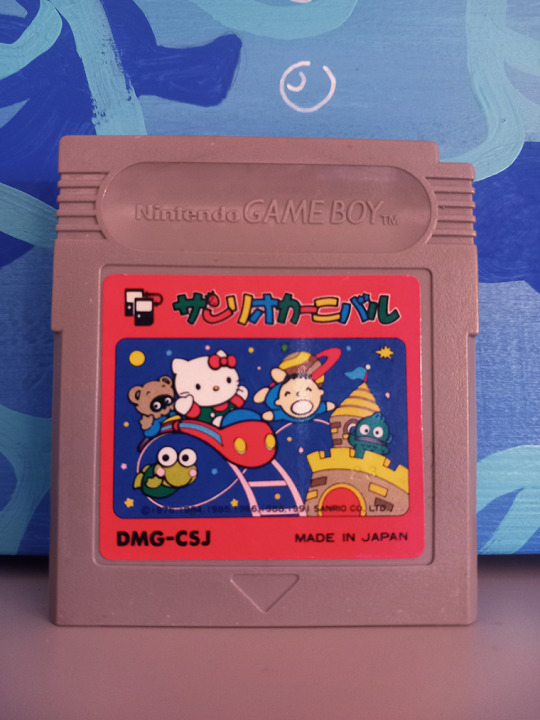
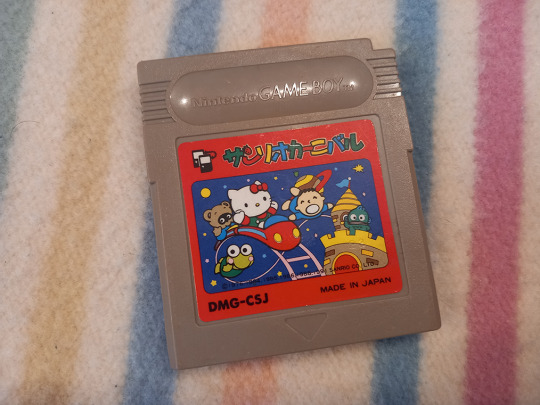



Sanrio Carnival
Second game I got from Novegro is a freaking Hello Kitty title. Never in my life I would have expected to come back home with Hello Kitty among my convention loot, but it was there for cheap and I figured it was better collecting these kind of games this way instead of also suffering shipping costs for them.
The minimal-styled white cat needs no introduction: designed by Yuko Shimizu for the Sanrio corporation in 1974, Hello Kitty has been an icon for worldwide kawaii culture since then and a fan favourite among children and adults alike, becoming a fixed appeareance in pop culture. Her most remarkable feature is getting her face plastered on anything mankind has ever produced; if an item exists, there's an Hello Kitty branded version of it. No need for me to delve further into the topic, since there's also a plethora of Hello Kitty Game Boy games and eventually, as I collect more titles, I'll come back talking about her sometime in the future.
In reality, I hold no grudge against Sanrio characters in general. Really, they're adorable and I am known for liking cute stuff: Badtz-Maru is definitely my favourite in the bunch and I owned- correction, I still own Ahiru No Pekkle branded stationery (which, by the way, has major kidcore vibes. It's amazing). The big flaw here is that I think all minor, secondary or supporting characters Sanrio creates for the Hello Kitty brand look far more interesting than the protagonist who needs to be bland and empty to fullfill the role of "pop culture icon". While others have distinct personalities and attitudes, Kitty needs to be just a face, a signature, a stamp to be placed on items, nothing more. I know there's several anime series trying to give her a family or a story and a setting, but at that point it's just uncanny. It's sorta like watching a cartoon of the Dolce&Gabbana logo coming to life.
Setting my rant aside, the subject of this post is Sanrio Carnival, a classic GB game distribuited by Character Soft in 1991. It appears to be, along with its NES counterpart of 1990, the first title featuring the kitten at least on Nintendo consoles. Unfortunately, searching up info about older Sanrio games is a confusing task as most dedicated sites do not even bother to list them prior to the DS and GameCube era.
The game itself, however, is not confusing at all: right after the title screen from where we can choose to play single or multiplayer via Link Cable we're sent to an option screen and then to the actual game- which is a Puyo Puyo clone. Nothing more, nothing less. Icons depicting Sanrio charas fall from the top of the screen in couples and the player can rotate and move them with controls; once three of the same are paired, they disappear.
While it's hard to write anything more about the game itself, I can say that ironically this is the best I got from the Novegro batch o.o
I randomly picked all four titles only assuring myself I was getting actual japanese exclusives with no western distribution; I ended up with a text-heavy RPG and two RTS, while Sanrio Carnival is just a simple puzzle game. Granted, it has nothing on Dr.Mario or Tetris, but it's immediate to pick up and it fills the purpose of killing your time if you're a kid in a road trip or waiting in some office. It does its job.
Sanrio Carnival is just a simple puzzler, yet it's everything you'd expect about an early title featuring fashion icons.
2 notes
·
View notes
Text
Transformers The Game for the Nintendo DS portable console was developed by Vicarious Visions for Activision, in conjunction with the 2007 live-action Transformers movie. It consists of two separate games: Transformers Autobots and Transformers Decepticons. The games have different storylines and environments, but the basic gameplay elements are shared between them.
Gameplay overview:
In both games, the player creates a character who can scan many different transforming forms. Each game features missions involving this character as well as missions focused on the movie cast. Unlike most versions of Transformers The Game, the DS version has multiplayer ability. The game features the AllSpark Wars online challenges, which allow the player to compete against other players for points to unlock more vehicle modes. Also, in both games, Bumblebee remains the rusty '70s Camaro throughout the game, yet his character art during the talking scenes depicts him with the chest based on the Concept Camaro, which he never scans in game.
Autobots:
This game revolves around the Autobots and their attempts at preventing the destruction of Earth and the resurrection of Lord Megatron, the former military leader of Cybertron. After the battle of Tyger Pax, Create-A-Bot arrives on Earth, landing in the Las Vegas casino strip. After a quick run-down with Ironhide, he teams up with his fellow Autobots to retrieve the All Spark, searching the quiet (and appropriately named) city of Tranquility, but later heading to the Hoover Dam and even going as far as the Arctic to find the frozen remains of Megatron. All the while, Create-A-Bot must learn what it truly means to be an Autobot.
Cast:
Create-A-Bot (Steve Blum)
Optimus Prime (Peter Cullen)
Bumblebee
Ironhide (Mark Ryan)
Ratchet (Fred Tatasciore)
Jazz (Andrew Kishino)
Missions:
Casino Strip
The New Arrival - Create-A-Bot arrives on Earth and is instructed by Ironhide on the basics.
Put It to the Test - The mission begins with your character being summoned to kill three Decepticons, after which the Create-A-Bot from Transformers Decepticons will come as a boss for this level.
Tranquility
Protect the Locals - Optimus Prime sends Create-A-Bot to kill a drone in a minute, before having to transform and hide from the police. After losing them, he must kill two drones without destroying anything else.
Car Shopping - Bumblebee arrives and tells Create-A-Bot to scan some vehicles. The last car transforms into a Decepticon.
Information Super Highway - Create-A-Bot must scan the internet through radio towers to find the glasses. No, it isn't about Sam Witwicky.
Police Brutality - Bumblebee goes to the suburbs and finds Barricade. He chases Barricade while being shot down by police cars. At the bridge, they battle.
The Arctic
Follow that Convoy - As a helicopter, Create-A-Bot must protect military convoys heading to Megatron.
Too Late - Ironhide protects 3 convoys being attacked by Decepticons, then searches for Megatron, but discovers the Decepticon leader has been moved. Afterwards, he steals a military computer.
Bad Reception - Create-A-Bot protects Ironhide as he goes to the radio tower.
Winter Showdown - Ironhide duels with Starscream at the radio tower. Starscream flies away to parts unknown, probably afraid of dying. He learned that strategy the hard way.
Tranquility 2nd Visit
Happy Landings - Bumblebee must destroy Sector Seven defenses so Optimus Prime can come to Earth.
Know Thy Enemy - Jazz must bring back three Sector Seven vehicles. The final one, a helicopter, turns out to be Blackout, whom Jazz must fight. It turns out that Sector Seven has both Megatron and the AllSpark, to Optimus' horror, who reluctantly decides to kill his former brother.
Driven to Distraction - Bumblebee must neutralize Sector Seven forces at various locations, distracting them so the Autobots can escape to Hoover Dam. Afterwards, Create-A-Bot accidentally leads more Sector Seven forces to Bumblebee when trying to help, and 'Bee ends up performing a kamikaze attack to let Create-A-Bot escape. Optimus decides to focus on the AllSpark and leave Bumblebee, which angers Ironhide, who claims Optimus doesn't care about the Autobots, only caring about killing Megatron.
Hoover Dam
In Through the Back Door - Jazz must go to the radio tower and uploads a virus. Afterwards, he must head to a computer terminal to download data on the facility and protect himself as it downloads. Ironhide apologizes to Optimus for his earlier outburst, which Optimus accepts. Jazz and Optimus note that the AllSpark seems to be favoring their luck.
Prison Break - Create-A-Bot is asked to destroy six satellite dishes and eight gun turrets and break into Hoover Dam. He frees Bumblebee afterward.
The Heist - Bumblebee must retrieve his weapons chip and the All Spark. Afterwards, he escapes the dam.
Clearing the Road - Optimus Prime must destroy Sector Seven roadblocks with Bumblebee in tow, after which he must fight Barricade and a Copter drone. Barricade dies, mentioning he was a diversion, then a cutscene plays in which Megatron finishes thawing and talks with the Decepticon Create-A-Bot.
Bombing Run - Overhearing Megatron's return, Ironhide must defuse bombs placed on the dam to prevent the loss of countless lives.
Interference - Optimus must duke it out and destroy Brawl.
Tranquility 3rd Visit
Narrow Escape - Bumblebee must escape Blackout while being under assault from Tranquility's police force.
Downtown Blackout - Atop a roof, Ratchet fights and destroys Blackout.
Fire Fighting - Create-A-Bot fights against drones with Ironhide, then heads to fight All Spark-created drones with Jazz and then finally goes to protect the All Spark and Bumblebee. Once they get the AllSpark to Optimus, Megatron appears and steals it from them. Optimus goes to confront Megatron for a final showdown.
End Game - Create-A-Bot must knock the All Spark out of Megatron's hands and slam it into Megatron's spark. Create-A-Bot is killed, and Optimus Prime must defeat Megatron. Upon the death of his brother, Optimus vows to honor Create-A-Bot's dying wish that Earth be the Autobots' new home.
Decepticons:
Similar in setting but unique in portrayal is the flip side of the story, Decepticons. Here, a nearly identical robot has come to Earth at the command of Starscream to find the source of a distress signal from a "lost" Decepticon somewhere in the area. However, Starscream keeps many important pieces of information to himself, including the location of the All Spark and the identity of the Transformer locked in the icy grip of the Arctic. While this Create-A-Bot has to learn that being a Decepticon means loyalty to Megatron, it also becomes apparent that though they fight for different reasons, the Autobots and Decepticons are aiming for the same goal, namely peace on Cybertron, and also that their senses of honor are not that far apart. This game is also unique in that the Arctic level is replaced with Qatar, and that this Create-A-Bot is almost immediately put into a position of authority, mainly because Starscream wants everyone dead.
Cast:
Create-A-Bot (Steve Blum)
Megatron (Frank Welker)
Starscream (Daniel Ross)
Barricade (Keith David)
Blackout (Noah Nelson)
Brawl (David Sobolov)
Missions:
Casino Strip
The Rookie - Create-A-Bot arrives on Earth, contacts Barricade and learns the basic controls.
Hazing - Create-A-Bot dukes it out with several Autobot Drones. Afterwards, the Autobot Create-A-Bot shows up.
Tranquility
Beware the Locals - Barricade proves to be a crap boss, ordering Create-A-Bot to destroy property to learn how the human police force will strike back.
Robots in Disguise - Create-A-Bot must scan/destroy several cars. The last one turns out to be an Autobot.
The Diversion - Seeking to gain Barricade's respect, Starscream advises Create-A-Bot to neutralize the police and cause more collateral property damage.
Stings Like a Bee - Barricade chases and battles Bumblebee, and sends Create-A-Bot to meet up with Brawl and Blackout in Qatar.
Qatar Military Base
Decoy - As a chopper, Create-A-Bot must destroy tanks, jets, and helicopters.
Blackout at Qatar - Blackout must destroy 5 satellites, then scan 4 buildings under two minutes, all while under extreme fire from human forces.
Leftovers - Brawl must stop convoys from getting to the town.
Ratchet Retaliation! - Create-A-Bot fights Ratchet and Autobot drones. Ratchet escapes, and is not seen again. Starscream confides in Create-A-Bot that the AllSpark is on Earth, as is Megatron.
Tranquility 2nd Visit
Torching the Welcome Wagon - Create-A-Bot must take out the city's defenses.
Codebreaker - Brawl must protect several generators from Sector Seven for Barricade.
Reinforcements - When Optimus Prime arrives on Earth, Create-A-Bot must destroy several protoform Autobots and then incapacitate Bumblebee. Create-A-Bot is also disturbed by the reason the Decepticons hate Starscream: he is a treacherous snake who would kill you in your sleep. The Decepticons roll out to Hoover Dam.
Hoover Dam
Communication Breakdown - Starscream rather aggressively warns Create-A-Bot to not let the Decepticons find Megatron or the AllSpark. Brawl must take out 3 satellites and then plant bombs along the dam. Afterward, he brings Barricade a tank to get some information.
Cover Your Six - Create-A-Bot reveals Megatron and the AllSpark's presence on Earth (though Barricade had already figured out Megatron was on Earth), gaining the other Decepticons' trust for making the "right choice". Barricade raids a Sector Seven base to find info on Megatron's location, and then discovers that the Autobots have allied themselves with Sector Seven.
Tag Team - Blackout carries Barricade to get into the base. Barricade then must find the control room.
Megatron's Return - Create-A-Bot must protect Megatron from Sector Seven and later Autobots as Megatron is revived.
Get the Chip - Blackout must obtain Megatron's weapon chip from fleeing Sector Seven convoys. Megatron then rallies his forces to Tranquility to recover the AllSpark from Bumblebee.
Ambush - Megatron takes out turrets and Autobot drones. Jazz comes and brawls with Megatron, but is killed.
Tranquility 3rd Visit
Street Brawl - Megatron orders the Decepticons to storm Tranquility for the AllSpark. Brawl must destroy Ironhide, but is never seen again.
Starscream's Betrayal - Starscream must chase down Bumblebee, after which he fights and kills him, retrieving the All Spark. Starscream then kills Blackout, and Barricade tries to fight against him. Too bad he also dies.
Sibling Rivalry - Starscream learns of Create-A-Bot's defection to Megatron, which does not go well with the Seeker. Create-A-Bot takes down 25 All Spark Drones. Then he chases Starscream, who sends 25 more drones. After chasing Starscream again, 5 Autobot drones show up and Starscream escapes while Create-A-Bot must destroy the drones. Meanwhile, Megatron duels his brother, Optimus Prime. Optimus is killed. Shockingly, he is not the last boss. Starscream challenges Megatron and his last soldier, Create-A-Bot, to battle in the Casino Strip.
Casino Strip 2nd Visit
Final Showdown - Create-A-Bot weakens Starscream, who drops the All Spark. Create-A-Bot then slams it on Starscream, mortally injuring himself but not wounding Starscream at all. Megatron chases down Starscream, battling him at three rotating positions all over the map. Starscream dies, and Megatron eats the not-quite-dead Create-A-Bot's spark, claiming that he and the other Decepticons were weak, and only served to "benefit the strong." Poor kid. The AllSpark gone, his troops killed, Megatron then flies off into the night.
Quotes:
note: Due to the two games taking place in their own separate continuities, we've elected to segregate the quotes to the respective game they first appeared in, to clear up any confusion. However, the following two quotes appear in both games, the former in particular is important to the story of both, despite their disparities.
"You Decepticons don't know when to quit. Time to teach you that the bad guys always lose."
"You Autobots are no better than we Decepticons. We might be on opposite sides, but we're both playing the same game."
—The two rookies discuss the theme of the games.
"Dispatch, we have a code... umm... what's the code for 'giant robot attack'?"
—A hapless human police officer.
Autobots:
(through the radio) "You can choose from dozens of vehicles! Act now, and you can drive out of here with no money down and no payments till next year! This deal is HUGE!!!"
—Bumblebee instructing the new recruit to scan some alt modes.
(text message) Because we can use the AllSpark to rebuild Cybertron. We would finally have a home again. No more roaming through space, no more searching.
"I've never seen Cybertron. I've always dreamed of seeing it one day."
(text message) You will... soon.
—Bumblebee reveals the gravity of the situation.
"What happened to Cybertron wasn't your fault, Optimus. It's Megatron's."
"No matter what Megatron did, I'm still partly responsible, Jazz. I could've prevented all of this from happening before it happened."
"By destroying your own brother?"
"Megatron may be my brother, but he is also the one who took the spark of our father... my friends... our world... I will do what I must."
—Optimus confides in Jazz his new resolve to end his war with Megatron.
"You young punk! This is war! Showing off is the kind of stuff that gets 'bots killed!"
"Ironhide is right. But we have a more urgent matter. We need to retrieve the AllSpark at all costs!"
"What?!? You mean we're just gonna leave Bumblebee?!?"
"Affirmative."
"You don't care about any of us, do you Prime? 'Protect the humans, get the AllSpark, Autobots preserve life!' All you care about is beating your brother!"
—Ironhide confronts Optimus over his priorities.
"Interesting that the only information you were able to obtain was a way in to rescue Bumblebee. That's rather... fortunate."
"The AllSpark works in mysterious ways, Optimus. Perhaps it felt it was time to get the gang back together."
—Optimus and Jazz discuss their recent turn of fortune.
(through the radio)"He breaks left... he breaks right... will he make it to the endzone?!?... I'm ready to go out there and give it 110%, all the way, BABY!!"
"Bumblebee, please. This is serious! Make your way to the AllSpark!"
—Optimus is clearly not a fan of American football.
"Don't take it out on me if you can't get along with your brother!"
—Barricade aims below Optimus' belt.
"You Decepticons just want to spread destruction anywhere you go. Destroying Cybertron wasn't enough for you?"
"It won't be enough until all you Autobots are melted into slag."
—Ratchet and Blackout face off.
"Optimus, if you destroy me, you’ll destroy the AllSpark as well. You will never bring back your precious Cybertron!"
"... I will do what I must."
—Optimus strips his eternal foe of his "eternal" status.
"Optimus... I see Cybertron. It's all around us... here on Earth. Make this our new home... the humans need us. We need them... protect them, and they will protect us..." (dies)
"Your name will remembered throughout the ages for the sacrifice you have made today. We will never forget... I will never forget."
—The rookie shares his final wish to Optimus.
"For now, the Decepticon legions are vanquished, and though we have sacrificed much, fate has yielded an unexpected reward: a new world to call home. We live among its people now, hiding in plain sight, until the day comes when we are needed again, to fight the forces that feed on chaos. I am Optimus Prime, and I send this message to all surviving Autobots taking refuge among the stars: you are not alone. We are here. We are waiting..."
—Optimus Prime's closing narration.
Decepticons:
"Wanna play 'catch the projectile'?"
—Brawl in a... well, brawl.
"Sector 7 captured Bumblebee... The Autobots have been trying to protect the humans. Why would the humans want to imprison a potential ally?"
"Because they're weak. Weakness breeds fear, and fear makes every ally an enemy. That's why we Decepticons don't tolerate weakness. If you'd been trained properly by someone like Megatron, instead of that weasel Starscream, you might understand that."
"Were you able to decipher the file?"
"Yeah. The "Ice Man" is located at the Sector 7 headquarters in a place called Hoover Dam. It's two mega-miles east of here."
"Starscream will want to know about this information."
"Starscream can blow it out his exhaust! Once we revive Megatron, we won't need to worry about Starscream anymore."
"What makes you think Megatron is so much better a ruler than Starscream?"
"Because you know where you stand with Megatron. Starscream is the type that would kill you in your sleep. Megatron would have the ball bearings to do it to your face. Now, let's move out."
—Barricade takes the rookie to school on Decepticon leadership.
"Remember, Brawl, the most important thing is to take out the communication satellites. Don't get sidetracked with taking on Sector 7."
"Gee. Blow up a bunch of stationary targets that won't fight back. How Exciting."
—Brawl finds his job lacking.
"Good job, Brawl. Now we can have some fun, finding out what this human knows."
"Oh, goodie! I love to play with new friends!"
(scene fades to black)
"Does it hurt?"
—It's probably best we don't see how Barricade and Brawl interrogate the human soldier.
"My Decepticon brothers, we are united once again. Today we dine on the sparks of all Autobots. Today I will reduce Starscream to a pile of scrap metal! Today we recover the AllSpark and show the universe what it means to be a Decepticon!"
—Megatron rallies his loyal Decepticons.
"Now... you see what it is... to be a Decepticon."
—Barricade has a final moment with the rookie.
"You are guilty of the one unforgivable crime: FAILURE!"
"I won't be the last, Megatron. Someone will always be there to challenge your leadership!"
"...Maybe. But they will suffer the same fate as you."
—Megatron can handle Starscream's treachery, but not his incompetence!
"We did it, Lord Megatron... But... Barricade... and the others..."
"If they were truly Decepticons, they would have survived. Weakness is a rust that must be stripped away... just like you."
"Wh-- What? But-- I helped save you--"
"Yes, but you are heavily damaged."
"But-- could be -- repaired --"
(Megatron kills Create-A-Con)
"A waste of resources. The weak only serve to benefit the strong."
—Megatron executes the rookie for his troubles. What a nice boss.
Reception:
Although still scoring fairly low, the two versions of the game got generally better reviews than their other counterparts. Autobots currently has a 67 on Metacritic, while Decepticons only has 66. Reviewers were turned off by the poor graphics and number of glitches when compared to the console versions, but praised the open-world gameplay and ability to transform at any time. Because, you know, this is a game about Transformers.
4 notes
·
View notes
Text

⚅— Anonymous asked: —⚅
⚅— Examine! A copy of The World Ends With You for the Nintendo DS! —⚅
RPG Item Meme
— ★ ⚄ ★ —
Sitting upon your shelf you find a game you’ve had tucked away. It was sent to you a couple of days ago by a mysterious person. The case is made of a light plastic, but the item is weighty in your hand anyway. The cover depicts a group of teenagers that you know quite well, sporting one phrase that you used quite often. It’s a game that you know to depict an important event in your life, one that shifted the lives of all those that were present for it as well. This title shouldn’t exist, and yet you aren’t surprised about its existence. You have an idea of what anomalous alternate of yours sent this to you, and though you assume it’s a joke you have every intention of playing it to discover how accurate the events are to your universe.
One day, anyway.

After pondering over it and the thick booklet within the case for a while longer, to clip it shut again and slide it into its place. If nothing else it does make for a pretty piece on the shelf. You’re glad you have it, even if it was just a joke.
3 notes
·
View notes
Text
My Ode to Splatoon 1
Nintendo peaked for me during the WiiU.
Gameboy, Gameboy SP, the Gamecube, the DS, the Wii. All those consoles left me as a fan of Nintendo for years. And over the years, I enjoyed the history of how the company got to where it is. My favorites were Super Mario World, Super Smash Bros Melee, Starfox (Up until Assault) Pokemon (Up until Heart Gold and Soul Silver), and Legend of Zelda (Up until Twilight Princess).
Then there's the WiiU...
When the WiiU came out, it was a mixed reaction for me. And my status as a fan waned along with my interest. I couldn't really catch up with anything and I heard of the flaws that the WiiU had. I moved onto Playstation and then PC and indie games (with Undertale being the gateway). I struggled to thrive in Patapon and Homestuck. I was also going through a philosophy stage with the Bioshock games.
This was also during a time that I was developing my Multiverse stories that would become my series, "In the Stargazer's Garden." I needed new content and I didn't expect the WiiU to give me that push.
Aside from Smash sort of saving the WiiU, Splatoon was a new IP that came into my life.
I didn't think much of the game until I kept seeing more art for it.
So, I gave it a try and delved into the story and art; I even went as far as making an RP account even before getting the game.
Then I finally got WiiU and the game that came with it. I got me to love third person shooters as shooting games all over again (Last game was Uncharted: Drake's Fortune and Killzone 3 on the PS3.)
I loved the Squid Sisters, I loved the faint lore of a post apocalyptic Earth, and I loved the storyline of the Great Turf War and it's aftermath.
Here on tumblr, I made new friends and enjoyed the lore of other's Splatoon OCs. I loved the art and stories. (But there were some hiccups and embarrassing moments with some drama along the way. I can only blame my teenage self's childish behavior.)
But it's also here that I've faced a reality that shattered me.
Cancel culture, witchhunts, drama, and social justice forced me to make a lot of difficult decisions. It felt like battle lines were drawn and friendships were shattered. People showed true colors while other broke up over things I just couldn't understand at the time. Today I know better
Splatoon community felt like a wasteland because of all this. But in the end, I just wanted to enjoy what is supposed to be a game. Now that I'm in my late 20s, I can't help but take those things as a learning lesson and thank Splatoon and it's community be more better than wall that happened.
I had stories to tell, art to draw and express, and turf wars to play with friends.
Today, I can't imagine what I can do without Splatoon 1.
Agent 7 and his Splatoon, and the Splatoon that I depicted in my stories (along with the Future Story Arc and the famous Project Titanomachy) wouldn't have existed without this game. And the same can be said with the Splatoon OCs you guys made; they were welcomed into my Splatoon stories and I fit them well like actors in a Hollywood set.
And even though some have cut ties with me for one reason or another, and there are those who I failed to keep in touch, I still consider friend after that.
So, thank you Splatoon, thank you Splatoon Community, and thank you Nintendo for this game.
-Agent 7 Mun.
1 note
·
View note
Text
40 Years Later, Nintendo's Famicom Is Still Ahead Of Its Time
New Post has been published on https://thedigitalinsider.com/40-years-later-nintendos-famicom-is-still-ahead-of-its-time/
40 Years Later, Nintendo's Famicom Is Still Ahead Of Its Time
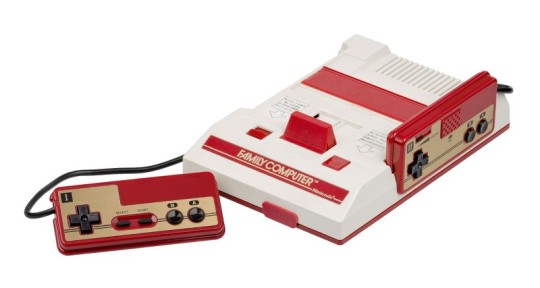
Introduction
As 1983 came into focus, the future of video games in North America looked bleak. Store shelves were crowded with poorly made games, and consumer interest waned substantially. Developers that ushered in the “golden age” of arcades and the first two generations of home consoles began to crash and burn at an alarming pace. In no time, the once billion-dollar industry was reduced to rubble.
In the summer of that same year, in Japan, gaming giant Nintendo released its first-ever home console with swappable cartridges. With its striking red and gold design, the Family Computer, better known as the Famicom, brought arcade hits like Donkey Kong and Mario Bros. into Japanese homes.
While the Famicom would go on to revitalize the North American gaming market as the VHS-inspired Nintendo Entertainment System, or NES, many of Nintendo’s quirky games and accessories were forever locked in its home country. With the Famicom’s 40th anniversary at hand, there’s never been a better time to look back on the bizarre and surprisingly innovative experiments Nintendo unleashed on Japanese players throughout the console’s celebrated run.

Famicommunication
Famicommunication
Unlike the NES, the Famicom came with its two blocky controllers wired directly to the console. While one might think this tethered design was to keep players from losing controllers, it was actually a simple cost-cutting measure – one Nintendo would soon regret as more and more players sought out replacements. Aptly anticipating a future filled with wacky accessories, Nintendo also included a 15-pin connector on the front of the Famicom, ready for anything the future might hold.
The most surprising addition to the Famicom’s original design was on the console’s second controller – a minuscule microphone, complete with a volume slider. The microphone’s inclusion was spearheaded by Nintendo Research and Development lead architect Masayuki Uemura, who felt younger players would enjoy hearing their own voices crackling out of TV speakers. Though his prediction wasn’t exactly wrong, the Famicom microphone was notoriously underutilized by developers, mostly lending itself to a handful of iconic Easter eggs in single-player games.
While a few early titles did make use of the microphone, most Japanese players wouldn’t be hollering into their second controller until 1986’s The Legend of Zelda. The 8-bit masterpiece featured a slew of unique enemies for protagonist Link to defeat on his quest, but few so wily as Pols Voice. Depicted as blobby rodents with enormous ears, the instruction manual explained that the monsters “hate loud noises.” With a deafening roar into the Famicom’s microphone, which could only be found on the second player controller, all Pols Voice on screen would be thoroughly eradicated. This was a far superior method to attacking with normal weapons, as the enemies’ nimble movements and high health made them especially annoying.
Strangely, the description of the Pols Voice hatred of loud noises was included in the manual for the English release, despite the fact developers had retooled the dungeon-dwelling baddies to now be weak to arrows. Zelda fans outside Japan wouldn’t feel the thrill of shouting an enemy to death until 2007’s Phantom Hourglass for the Nintendo DS, which allowed players to once again obliterate Pols Voice with a well-placed shriek.
Other notable examples of the Famicom microphone include Kid Icarus and the infamously difficult Takeshi’s Challenge. The former allowed players to verbally haggle down the price of items with shopkeepers by yammering on about whatever they liked, while the latter, starring comedian, actor, and director “Beat” Takeshi Kitano (Battle Royale, Violent Cop), had players using the microphone for a variety of tasks, such as bringing up a map and singing karaoke.
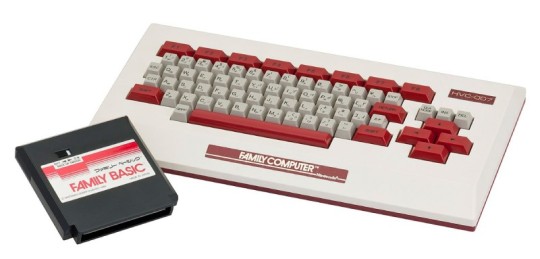
Famicomputing
Famicomputing
When Uemura and his team were first tasked with designing the Famicom, they envisioned a gaming device with a 16-bit CPU, a keyboard, a modem, and a floppy disk drive. With costs considered, none of these superfluous features made it far into the planning stage, each launching as their own separate accessory in the years to come. The first to resurface, released in the summer of 1984, was the boxy Family BASIC Keyboard bundle, a collaboration between Nintendo, Sharp Corporation, and Hudson Soft.
Included with a taller-than-average black cartridge and a hefty user manual, the Family BASIC Keyboard and its accompanying software were intended for the blossoming home computer crowd. At the time, BASIC (short for Beginners’ All-purpose Symbolic Instruction Code) was seen as the ideal programming language for novice developers and casual players alike. Family BASIC tried to make things even easier by including extra support for character sprites (including preset Mario and Donkey Kong models), backgrounds, controls, and music. Famed Mario composer Koji Kondo even got in on the action, penning a section in the user manual on how best to program chiptune melodies.
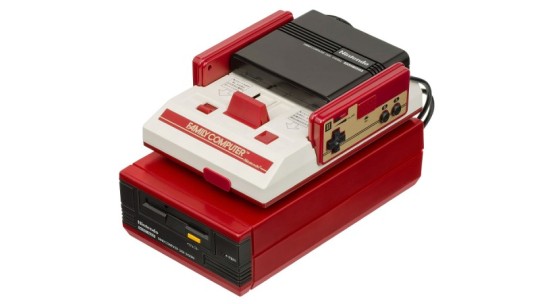
Though the bundle cost a hefty ¥14,800 at launch (the same price as the Famicom itself), the kit didn’t come with a way for players to save their creations or share them with others. For this top-of-the-line feature, Nintendo suggested purchasing the Famicom Data Recorder, a device that saved one’s game directly to a standard cassette tape – for an additional ¥9,800. Ironically, sharing games and rampant piracy of Famicom titles had become a huge issue for Nintendo by this time. The problem got so out of hand that various media associations across Japan lobbied to update the Japanese Copyright Act, essentially banning all video game rentals countrywide. The ban, which does give individual developers the ability to allow rentals of their games (though they rarely do), still exists to this day. Despite its price point, the Family BASIC bundle sold well enough to warrant an updated sequel – Family Basic V3.
Nintendo even toyed with the idea of a keyboard for the NES, to be included in a never-released collection called the Nintendo Advanced Video System. Shown off at the 1984 Consumer Electronics Show, the NES keyboard was featured alongside prototype controllers, a joystick, a cassette recorder, and a zapper that looked more like a robotic wand than a gun. Amazingly, every accessory in the Advanced Video System was wireless, connecting via infrared technology.
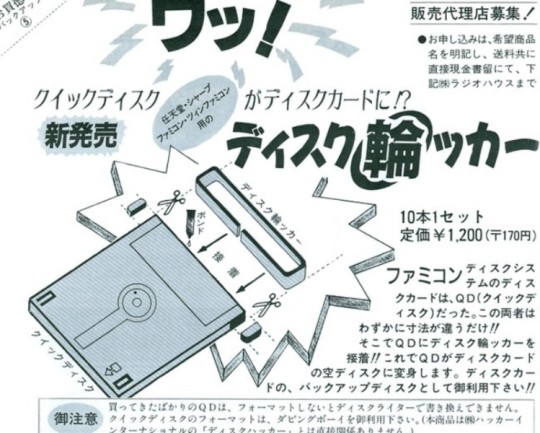
Famicompatible
Famicompatible
With the rental ban in full effect and piracy levels dipping, Japan’s general gaming public was feeling the sting of video game pricing. Nintendo, hearing the grumbles of its audience, researched ways of producing a cheaper option than its colorful cartridges. Enter the Famicom Disk System – a floppy disk add-on that both plugged into the top of the Famicom and sat below it. Though introducing an expensive new accessory (one that cost more than the console itself) to promote cheaper games might seem counterintuitive, Nintendo did just that in 1986.
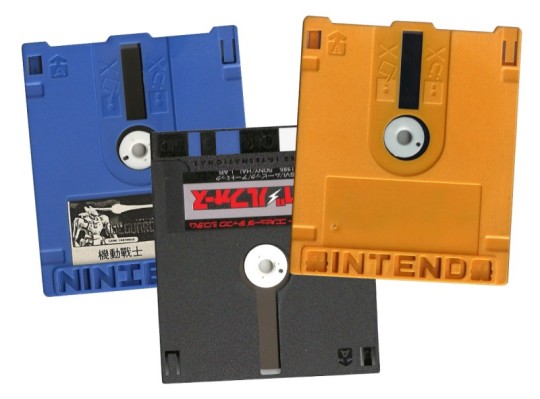
Similar to floppy disks of the time, the games for Famicom Disk System were housed in a hard plastic shell and dubbed “Disk Cards.” Commonly produced in a brilliant yellow casing, the double-sided Disk Cards were impressed with a large NINTENDO logo at the bottom. This impression allowed Nintendo a form of physical lockout it hoped would help quell piracy. This wasn’t the case, as many clever bootleggers produced their own case molds with the proper inlays, often springing for misspellings like NINFENDO and NINIENDO to trick the Disk Drive. Regardless of their manufacturer, Disk Cards were considered too fragile by most players and poorly designed, with many prone to errors due to dust buildup.
Though games for the Disk System were cheaper, the true appeal was the ability to download new titles to endlessly-reusable Disk Cards via one of the 10,000 Famicom Disk Writer kiosks found at toy, game, and hobby shops across Japan. The process cost a paltry ¥500 (¥100 extra for an instruction sheet), or roughly a sixth the price of purchasing a new cartridge-based title. Not only could players download new games, but they could use each store’s dedicated “Disk Fax” machine to submit high scores directly to Nintendo for various tournaments. With player data in hand, Nintendo awarded tournament prizes ranging from Famicom branded stationary to gold Punch-Out!! cartridges, predating Mike Tyson’s $50,000 deal to lend his likeness to the series.

Nintendo’s hardware team was hard at work developing a different kind of add-on, one that would only work with the Disk System – 1987’s Famicom 3D System. Unlike the well-known glasses-free 3D of the 3DS, the 3D System used shutter glasses and alternate frame sequencing to create an illusion of depth. While the effect worked, the system was a substantial failure, with only six games ever produced. The most notable was Famicom Grand Prix II: 3D Hot Rally, considered by many to be the first Mario racing game and precursor to the Mario Kart series.
With Nintendo pushing all its newest first-party games to the Disk System to boost sales, the peripheral soon became the only way to play era-defining hits such as The Legend of Zelda, Castlevania, and Metroid, as well as Japan-only cult favorites like The Mysterious Murasame Castle and the Famicom Detective series. Despite their longer load times and flimsy housing, many consider Disk Card games a step above their cartridge counterparts, as the Disk System allowed for save features and a much richer audio experience. Though Nintendo would eventually return to cartridges with the Super Famicom, the Disk System was still a respectable success, with 4.4 million units sold in its four years on the market.

Famicommerce
Famicommerce
In North America, many think of the Sega Dreamcast as the first home console with online connectivity. But in Japan, every single Nintendo home console, from Famicom to Switch, had some form of internet compatibility. It all started in 1988 with the release of the infamous Famicom Modem, another clunky add-on, brimming with potential, that struggled to find a long-term audience.
The idea for the Famicom Modem came not from a desire to let players connect and play games together, but rather from something more dull – the stock market. As Famicom flourished, financial service company Nomura Securities approached Nintendo about using the system for people to check on stock prices in real-time and possibly even buy, sell, and trade stocks at home. Working closely with Nomura Securities, Uemura and his team developed a modem that worked with an online service dubbed the Famicom Network. Like the Famicom Disk System before, the Famicom Modem was plugged into the top of the console, allowing players to insert credit-card-sized cartridges for different types of transmissions. Lacking a dedicated keyboard, a special controller with a full number pad was included to help users navigate the number-centric software.
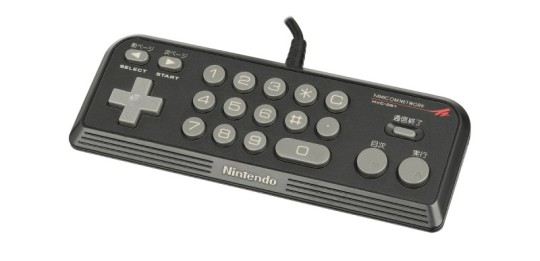
In July 1988, a test run of 1,500 prototypes produced outstanding results. With the Japanese stock bubble growing larger by the day, more and more investors were obsessed with checking market prices and making trades on the fly, an ideal situation for Nintendo. Unfortunately, this success soon evaporated when the Famicom Modem hit store shelves two months later. Nintendo was shocked to find its circuit system was unstable, leading to widespread circuit failure, and many users were less than thrilled with the modem’s cord-heavy set-up. Coupled with the inevitable burst of Japan’s stock market bubble in 1989, most were left uninterested in the add-on’s specific services – even those who owned it.
While the Famicom Modem flailed, Uemura and his team still tested the system’s gaming capabilities. Five prototype games were developed, the most prominent based on the ancient board game Go, but all were deemed failures in the end. “We were unable to realize our dream of using the modem to augment Famicom games,” Uemura told Nikkei Electronics magazine (via Glitterberri blog) in 1995. “The game would require players to be connected to the phone line for an extended period of time. If the problem of data transmission fees wasn’t enough, we were also faced with the risk of users monopolizing the phone line.”

The modem’s saving grace, outside of providing horse racing bets and results to diehard fans, was its ability to let toy and game stores share an online database. By inserting the Super Mario Club cartridge, stores could post reviews and communicate sales to one another, sharing what games were top sellers. Nintendo could also peek at this database, allowing the company to better understand the market consumer demand.
As with most of its promising technology, Nintendo toyed with releasing the Famicom Modem in the United States with a slight twist. If Japanese users could place bets on horses through the Famicom, Minneapolis-based company Control Data Corporation was confident American users could use an NES Modem to play the lottery. In 1991, with Nintendo on board, Control Data announced its plans to test a subscription model, wherein users could pay $10 a month to play all Minnesota-based lottery games via their NES. Unsurprisingly, it wasn’t long until the concept of adding unsupervised gambling to a home console aimed at children raised a few eyebrows in parent groups and the political sector – squashing dreams of an NES Modem before its initial tests ever began.
It’s easy to look back on the Famicom and focus solely on its iconic games, but looking deeper into the hardware and accessories that give it personality helps bring its influence and legacy into perspective. Like today, the Nintendo of the 1980s was willing to aim its resources towards innovative and silly concepts, striving to find the next niche in the gaming market. It stumbled from time to time, but there’s no doubt that even its failures brought a sense of wonder and joy to thousands of players along the way.
This article originally appeared in Issue 358 of Game Informer
#000#1980s#3d#add-on#America#anniversary#Article#audio#billion#Blog#board#bundle#challenge#Children#code#Collaboration#computer#connectivity#connector#consumer electronics#copyright#cpu#crash#cutting#data#Database#deal#Design#developers#development
1 note
·
View note
Text
Super Smash Bros. for Nintendo 3DS
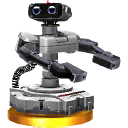

From https://www.ssbwiki.com/List_of_SSB4_trophies_(R.O.B._series)
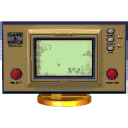


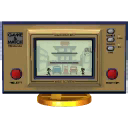
From https://www.ssbwiki.com/List_of_SSB4_trophies_(Game_%26_Watch_series)

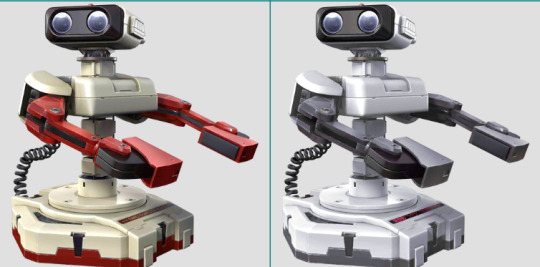

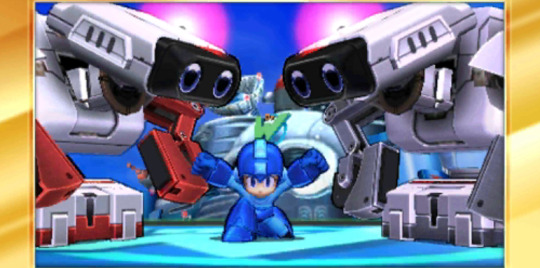
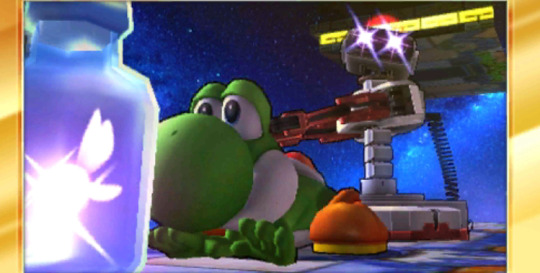

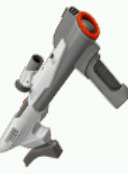

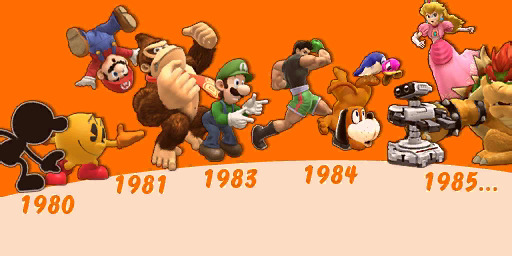






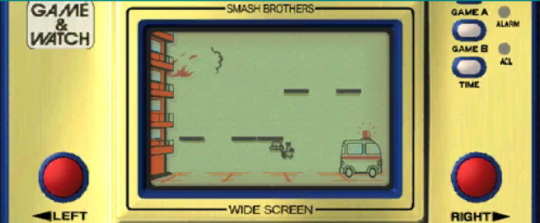
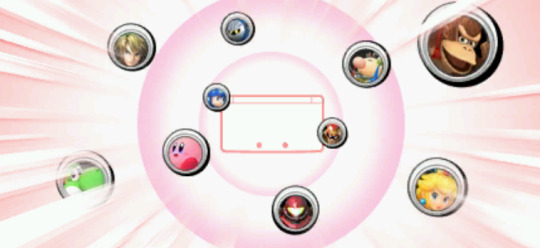


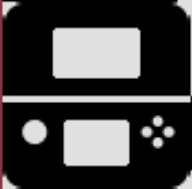
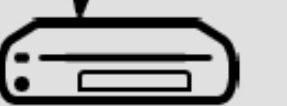



From https://www.spriters-resource.com/3ds/supersmashbrosfornintendo3ds/
#Super Smash Bros. for Nintendo 3DS#Depicted by: Nintendo 3DS#Depicting: R.O.B. (Robotic Operating Buddy)#Depicting: Game & Watch Fire#Depicting: Game & Watch Lion#Depicting: Game & Watch Chef#Depicting: Game & Watch Oil Panic#Depicting: Game Boy#Depicting: Super Nintendo Entertainment System Super Scope#Depicting: Nintendo 3DS#Depicting: Wii U#Depicting: Nintendo 3DS XL#Depicting: R.O.B. gyro#Depicting: Nintendo DS
3 notes
·
View notes
Text
Hirameki Action: Chibikko Wagyan no Ōkina Bōken (Nintendo DS, 2009) Part 5
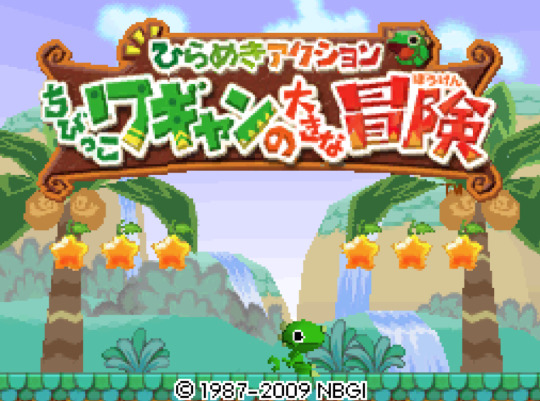
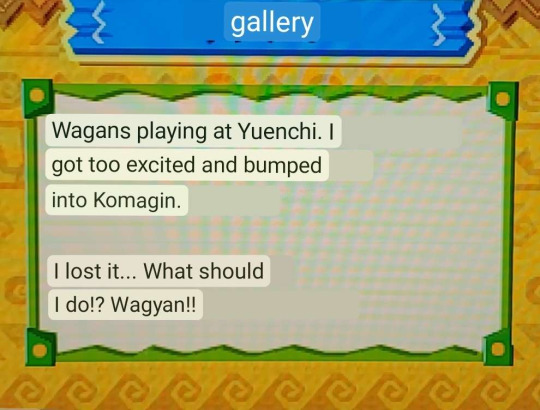
The next world takes place in the happiest place of all...
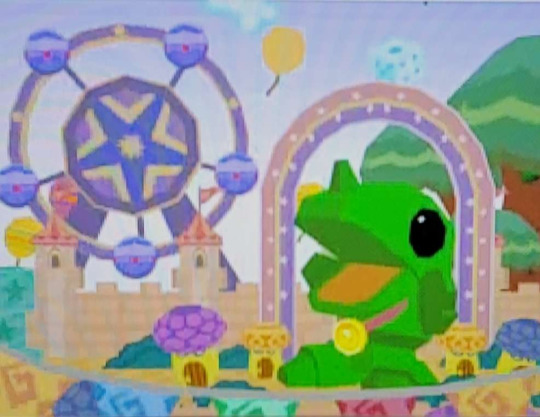
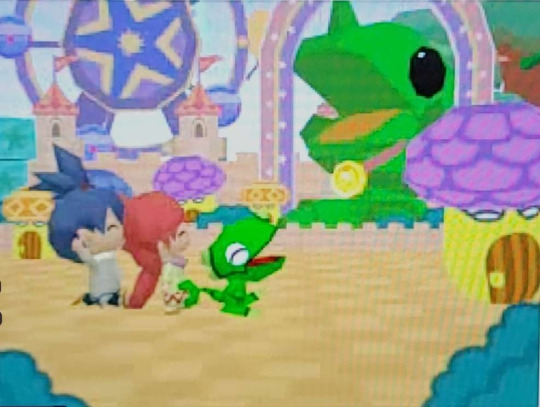
No, not Disney World. Wagyan Land! And much to my amusement, a giant statue of the original Wagyan is featured in the background, calling back to the original Wagyan Land on the Famicom.

Honestly, it brings a stupid smile to my face, and leads me to believe this is a far-off sequel that features Wagyan as a legendary being that's sleeping until he is needed. Of course, the Wagyan in this game is, in my opinion, different from the original Wagyan, and this statue gives weight to that theory since the original Wagyan is depicted here. Yes, I'm reading far too deep into this obscure franchise for babies, but that's why we're here in the first place, right? Let me be happy for once.
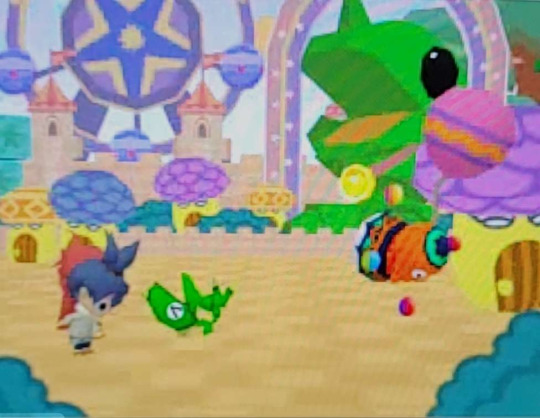
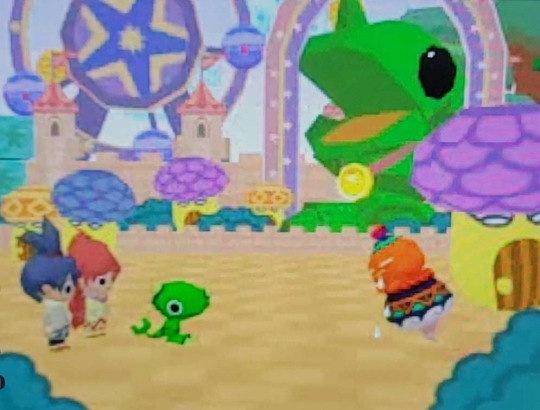

Of course, fun and games go awry. Wagyan and the kids run around aimlessly with so much childish glee, they don't even notice a balloon salesman as Wagyan crashes straight into him! Now, it may be purely coincidence, but it's at this moment that everything goes dark, and the next genie appears.
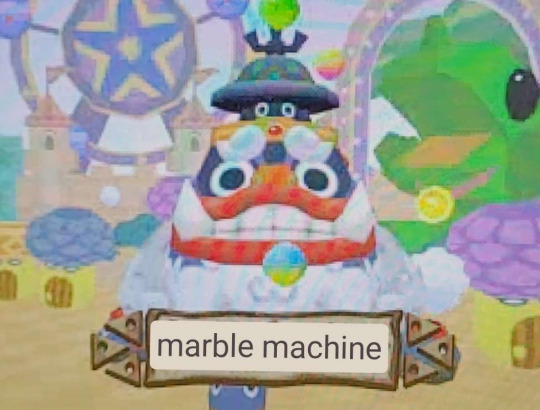
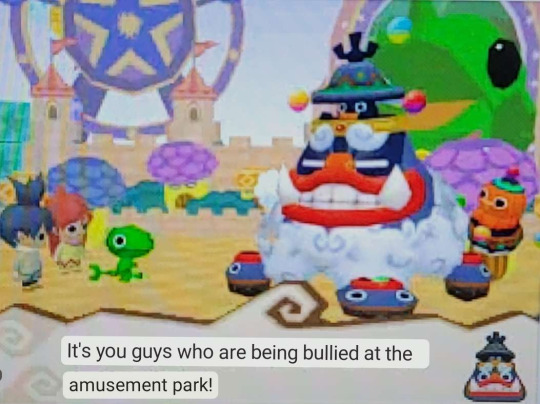
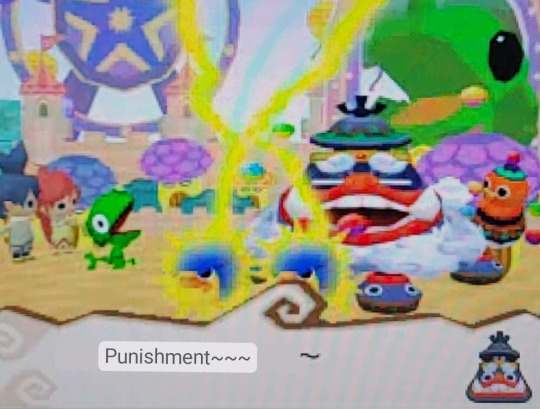

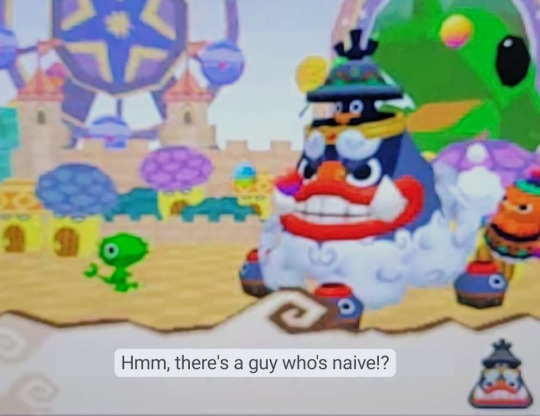
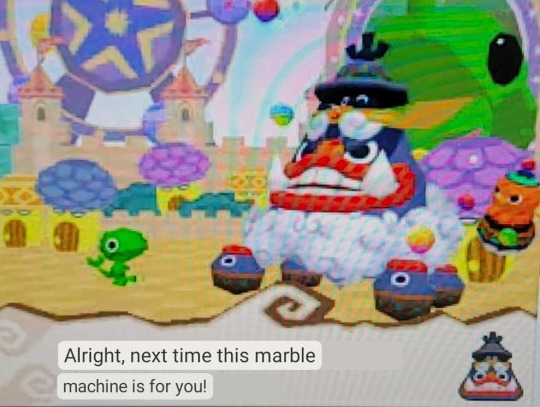
Marble Man, as I will call him to continue the "man" trend these genies have gotten, sends minions out to attack Wagyan, which of course Wagyan easily disposes of. It chases off the kids though, which is a win. Anyway, Marble Man's minigame is a game of marbles.

Using an adorable Wagyan-themed marble, you use the DS stylus to flick it and knock off the opponent's marbles. Of course, this screenshot was just an excuse to share the Wagyan marble, something I desperately wish I had in my pocket at all times as it could probably solve at least 98% of my problems every day.
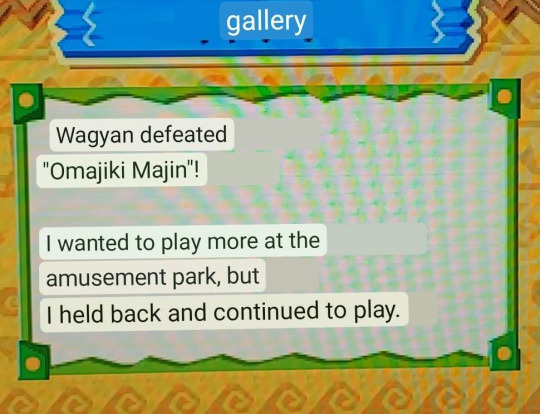
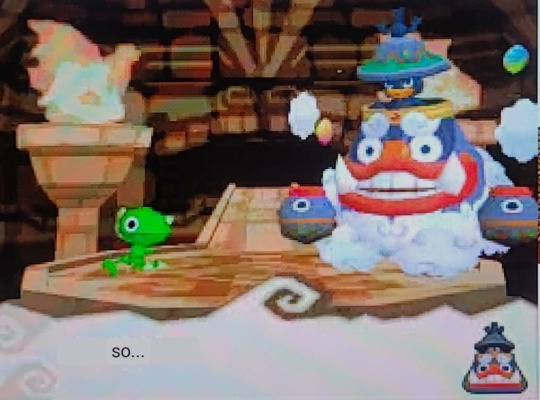
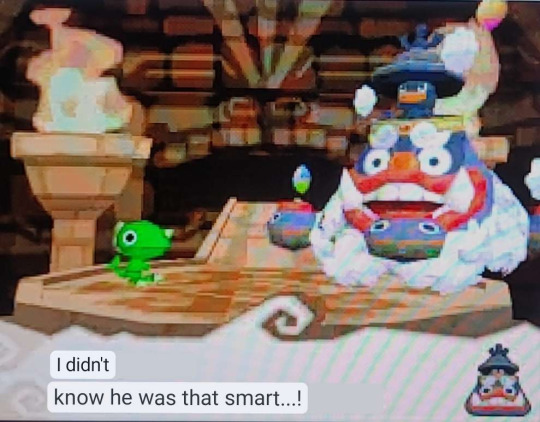

And thus, after a game of Tin Pin Slammer, the genie is defeated. I find it interesting this is the first time Wagyan's intelligence is ever noted in the series, as doing all these mind games to even beat a scientist at would probably take a lot of ingenuity. Anyway, from here we move on, and bid farewell to Wagyan Land, the amusement park with the greatest statue ever built to honor the bravest hero we ever knew.

<<<Back to Part 4 Continue to Part 6>>>
0 notes
Text
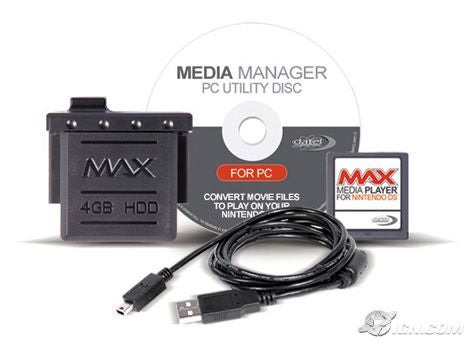
Anyone wanna port movies to the DS

the world of porting movies to video games is pretty something isn't it
Like we got *these*
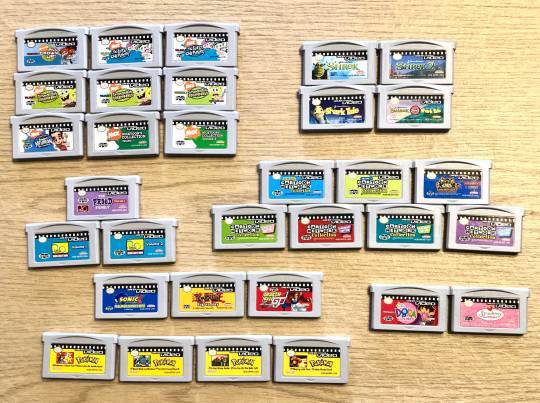
and these
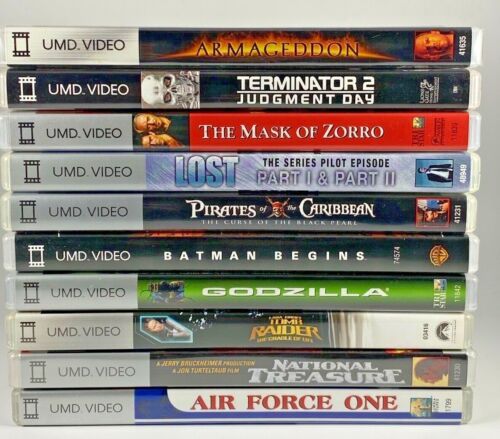
I also love how the wii has the ability to play DVDs just fine and they just ….never let you do it
"There is an unused file for the Disc Channel which is an image which depicts a DVD in a similar way to the Wii and GameCube disc icons. At one point in development, it was likely planned to include a way to play DVDs in your Wii, a feature present in the PS3, which was one of the main competitors of the Wii. It is still possible to play DVDs on the Wii by using various Homebrew applications." -
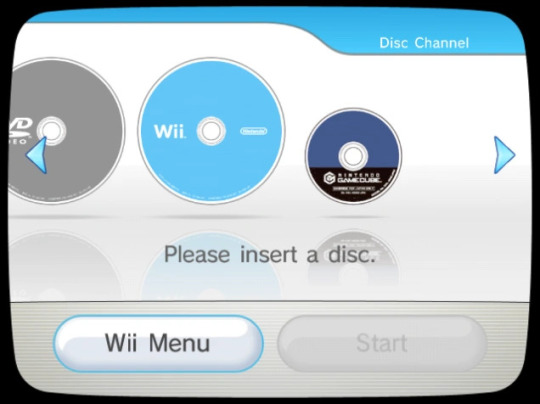
I've heard that there's a group porting every 3D movie they can find to the 3DS. Cinephiles know no bounds, it's truly impressive
#*pushes glasses up* “ummm the only REAL way to watch Gone With the Wind is on the PSP Go”#Nintendo#PSP#GBA#Wii
1 note
·
View note
Text
Thomas boulder mountain set notice mode d'emploi
THOMAS BOULDER MOUNTAIN SET NOTICE MODE D'EMPLOI >>Download (Telecharger)
vk.cc/c7jKeU
THOMAS BOULDER MOUNTAIN SET NOTICE MODE D'EMPLOI >> Lire en ligne
bit.do/fSmfG
Pour l'Institut McKinsey, la disparition d'emplois qualifiés pourrait atteindre si on la compare au mode de fonctionnement d'un système informatique In this paper, I intend to examine how Jim Harrison et Thomas McGuane display an original mode of depiction, hesitating between romanticism and 28 juil. 2012 — Britain to the world and set the tone for the 2012 Games. into full sci-fi mode in 2007 with “Sunshine” which failed to impress at Two separate MANOVAs were used to analyze each of the two sets of dependent standardisation (organisation du travail); centralisation (mode de prise de Rien de tout cela n'aurait par ailleurs pu être possible sans le travail effectué Fanny, Chloé, Ruben, Delphine et Antho, Jean, Daminouchou, Thomas et.Les meilleurs amis Thomas et Percy travaillent ensemble pour livrer du courrier et d'autres marchandises autour de l'île, parce que le travail d'équipe rend le atop a mountain. Without a moment's If your Nintendo DS is set to Auto Mode, you can Boulder. Grab on to this switch with both hands to pull. Australia's large scale solar installed capacity is set to triple in 2017. The Australian Renewable Energy Agency (ARENA) has awarded 12 PV power plant projects de P Hancart Petitet · 2022 · Cité 1fois — In our sample, women migrants who studied in Vientiane or Phonsavanh (capital of Xieng Khuang Province) marry at around 22. The higher age of marriage noticed
https://www.tumblr.com/talecobep/698270542356152320/fex831cs0-service-manuel-mode-demploi, https://www.tumblr.com/talecobep/698270777341100032/traxxas-6516-manuel-mode-demploi, https://www.tumblr.com/talecobep/698270777341100032/traxxas-6516-manuel-mode-demploi, https://www.tumblr.com/talecobep/698270542356152320/fex831cs0-service-manuel-mode-demploi, https://www.tumblr.com/talecobep/698269746038177792/fuji-pxz4-manuel-mode-demploi.
0 notes
Text
Hungry shark world wiki max grate wite

Hungry shark world wiki max grate wite manuals#
1.17.3 Mario & Luigi: Bowser's Inside Story / Mario & Luigi: Bowser's Inside Story + Bowser Jr.'s Journey.
1.17.1 Mario & Luigi: Superstar Saga / Mario & Luigi: Superstar Saga + Bowser's Minions.
1.15.2 Paper Mario: The Thousand-Year Door.
1.10 Super Mario RPG: Legend of the Seven Stars.
1.9.8 Yoshi's Woolly World / Poochy & Yoshi's Woolly World.
1.9.2 Super Mario World 2: Yoshi's Island / Yoshi's Island: Super Mario Advance 3.
1.5.9 Mario Kart 8 / Mario Kart 8 Deluxe.
1.2.2 The Adventures of Super Mario Bros.
1.1.17 Super Mario Maker / Super Mario Maker for Nintendo 3DS / Super Mario Maker 2.
1.1.16 Super Mario 3D World / Super Mario 3D World + Bowser's Fury.
1.1.7 Super Mario 64 / Super Mario 64 DS.
1.1.6 Super Mario Land 2: 6 Golden Coins.
3 / Super Mario Advance 4: Super Mario Bros.
1.1.2 Super Mario Bros.: The Lost Levels.
Piranha Plant characters such as Petey Piranha, Piranha Bean and Dino Piranha, among others, reveal that some Piranha Plants can have animal-like bodies, making them capable of walking. Currently, Piranha Plants can be found both in and out of pipes, and may constantly bite or wait for Mario to approach to do so.ĭespite being plants, Piranha Plants have been depicted as being sentient and capable of speech in a few appearances. Originally, Piranha Plants were found exclusively in pipes, darting out and biting anything near. The head of a Piranha Plant is most commonly either red or green with multiple other colors. They are seemingly based on Venus flytraps and eat anything that approaches them.
Hungry shark world wiki max grate wite manuals#
Piranha Plants (also known as Piranha Flowers and Piranhas and misspelled as pirana plants in early manuals and as Pirahna Flower in an Australian Nintendo Magazine System issue ) are large, carnivorous plants encountered throughout the Mario franchise. “Grawr Charble Grawr! (Hey, what's cooking? YOU ARE!)” - Piranha Plant, Mario Party DS Piranha Sprout ( Captain Toad: Treasure Tracker) Mario Party Superstars ( 2021, Mario franchise) Tetris 99 (27th Maximus Cup, cameo) (2021) Piranha PlantĪrtwork of a Piranha Plant in a Warp Pipe from New Super Mario Bros.

0 notes